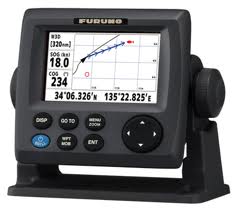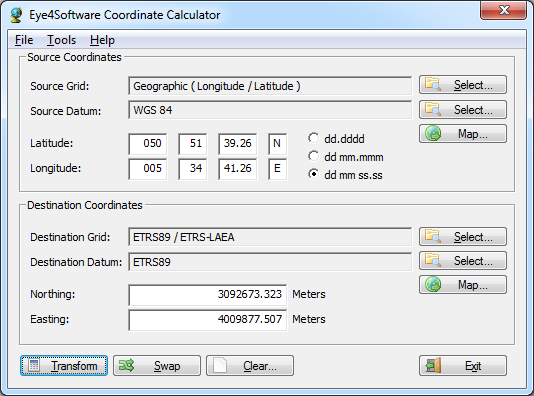
Around the boundaries of large scale maps (1:100,000 or larger) coordinates for both adjoining UTM zones are usually printed within a minimum distance of 40 km on either side of a zone boundary.
#GPS UTM COORDINATE CONVERTER SERIES#
However, it is often convenient or necessary to measure a series of locations on a single grid when some are located in two adjacent zones.

Universal Polar Stereographic coordinate system maps the polar regions and is used in conjunction with the UTM system.ĭistortion of scale increases in each UTM zone as the boundaries between the UTM zones are approached. The scale factor is less than 1 inside these lines and greater than 1 outside of these lines, but the overall distortion of scale inside the entire zone is minimized. In each zone, the scale factor of the central meridian reduces the diameter of the transverse cylinder to produce a secant projection with two standard lines, or lines of true scale, located approximately 180 km on either side of, and approximately parallel to, the central meridian (ArcCos 0.9996 = 1.62° at the Equator). Distortion of scale increases to 1.0010 at the outer zone boundaries along the equator. By using narrow zones of 6° (up to 800 km) in width, and reducing the scale factor along the central meridian by only 0.0004 (to 0.9996, a reduction of 1:2500) the amount of distortion is held below 1 part in 1,000 inside each zone. Zone numbering increases in an easterly direction.Įach of the 60 longitude zones in the UTM system is based on a transverse Mercator projection, which is capable of mapping a region of large north-south extent with a low amount of distortion. Zone 1 is bounded by longitude 180° to 174° W and is centered on the 177th West meridian. The UTM system divides the surface of the Earth between 80° S latitude and 84° N latitude into 60 zones, each 6° of longitude in width and centered over a meridian of longitude. UTM involves non-linear scaling in both Eastings and Northings to ensure the projected map of the ellipsoid is conformal. This projection is conformal, so that it preserves angles and approximate shape but invariably distorts distance and area. It is one of the most commonly used projections for rectifying remotely sensed data as well as for large-scale topographic mapping. The Transverse Mercator projection is a variant of the Mercator projection, which was originally developed by the Flemish geographer and cartographer Gerardus Mercator, in 1569. In the post-war years, these concepts were extended into the Universal Transverse Mercator / Universal Polar Stereographic (UTM/UPS) coordinate system, which is a global (or universal) system of grid-based maps. Calculating the distance between two points on these maps could be performed more easily in the field (using the Pythagorean theorem) than was otherwise possible using the trigonometric formulas required under the graticule-based system of latitude and longitude. Prior to the development of the Universal Transverse Mercator coordinate system, several European nations demonstrated the utility of grid-based conformal maps by mapping their territory during the interwar period. Currently, the WGS84 ellipsoid is used as the underlying model of the Earth in the UTM coordinate system.

For the remaining areas of the Earth, including Hawaii, the International Ellipsoid was used. For areas within the conterminous United States, the Clarke 1866 ellipsoid was used.

The system was based on an ellipsoidal model of the Earth. The Universal Transverse Mercator coordinate system was developed by the United States Army Corps of Engineers in the 1940s.


 0 kommentar(er)
0 kommentar(er)
